Haun's Mill Historic Site
Introduction
Text-to-speech Audio
Images
Newspaper article describing open conflict and threats from the Mormons in and around Daviess County
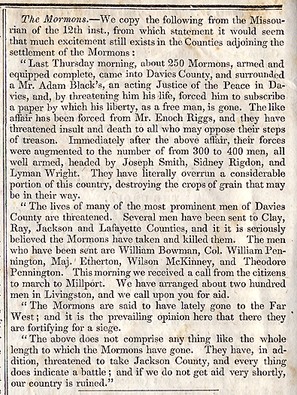
Headquarters of the Militia, City of Jefferson, Oct. 27, 1838. General John B. Clark: Sir Since the order of this morning to you, directing you to cause four hundred mounted men to be raised within your division
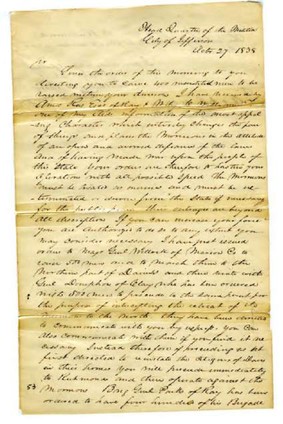
Jacob Hawn established the mill between 1835-1836. By October 1838, an estimated 75 families lived here in a dozen houses with one Blacksmith shop.
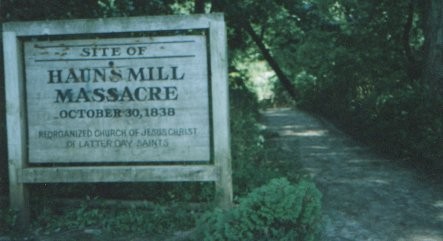
Site of Haun's Mill, now a historic site
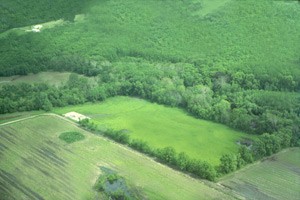
Shoal Creek bordering the site at Haun's Mill. Mormon leaders asked for quarter. This request fell upon deaf ears and villagers fled across this creek including many women and children.
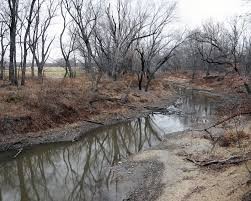
June 25, 1976, Missouri Governor Christopher Bond rescinds Mormon Extermination Order.
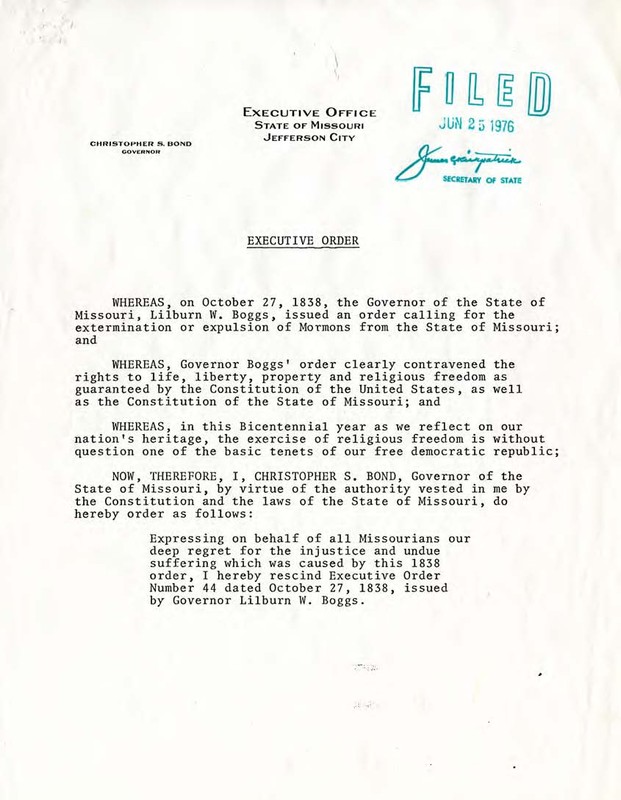
Backstory and Context
Text-to-speech Audio
Many Mormons fled out of Jackson County to the surrounding counties of LaFayette and Van Buren, however, the majority went north across the Missouri River to Clay County in Liberty. The locals initially gave the fleeing Mormons some help. Members of the LDS church arrived in large numbers in this part of Missouri in 1838, leading many non-Mormon residents to fear that the church would soon control the politics and economy of the area. The bill to establish the new counties was introduced by Missouri legislator Alexander Doniphan who was friendly with the Mormons. The settlement of Far West along Shoal Creek was approximately 12 miles from Haun’s Mill.
In 1838, Mormon populations grew to over 5,000 in Caldwell County and Joseph Smith led settlers north to Daviess County in order to help the incoming settlers from the Ohio division of the church.
The massacre at Haun's Mill was the high water mark of the Missouri Mormon War of 1838. The massacre occurred after the Governor Lilburn Boggs issued Missouri Executive Order 44, known as the Mormon Extermination Order. Finally, the aftermath of Haun's Mill Massacre and the capture of Joseph Smith and the migration of Mormons to Nauvoo, Illinois.
